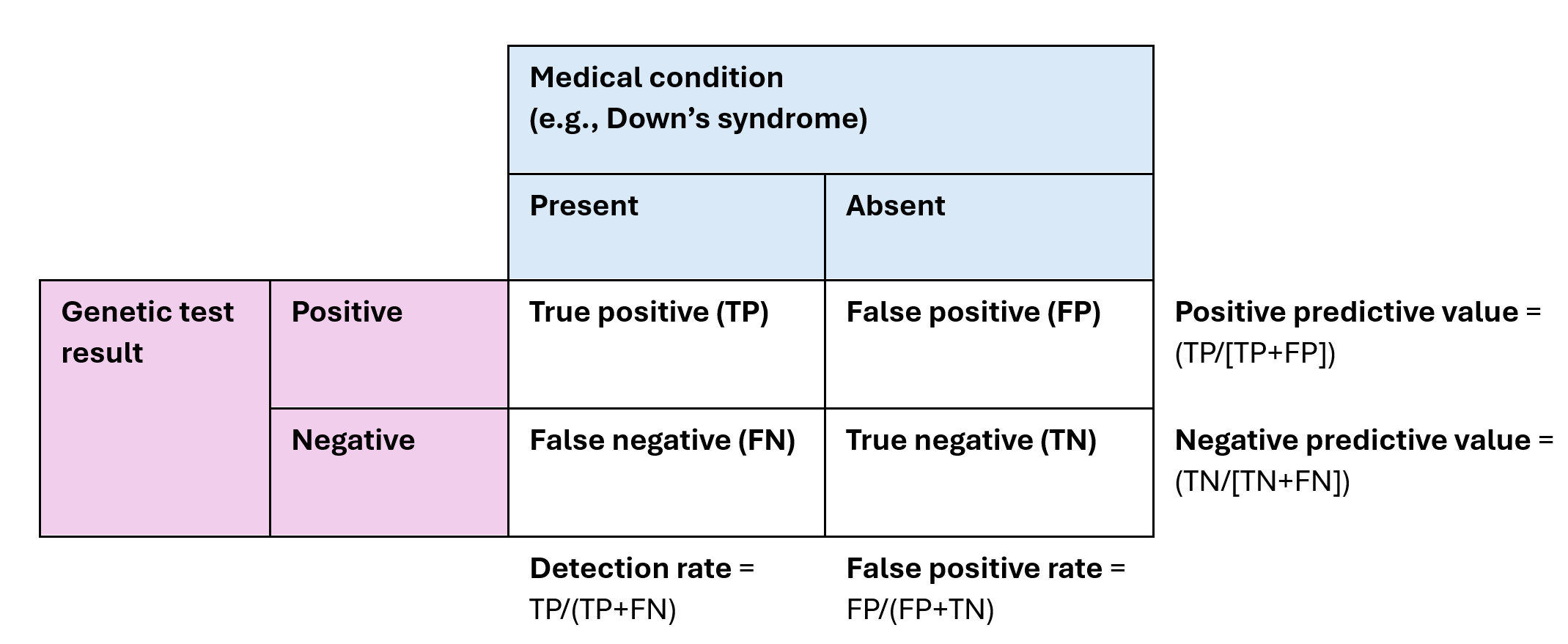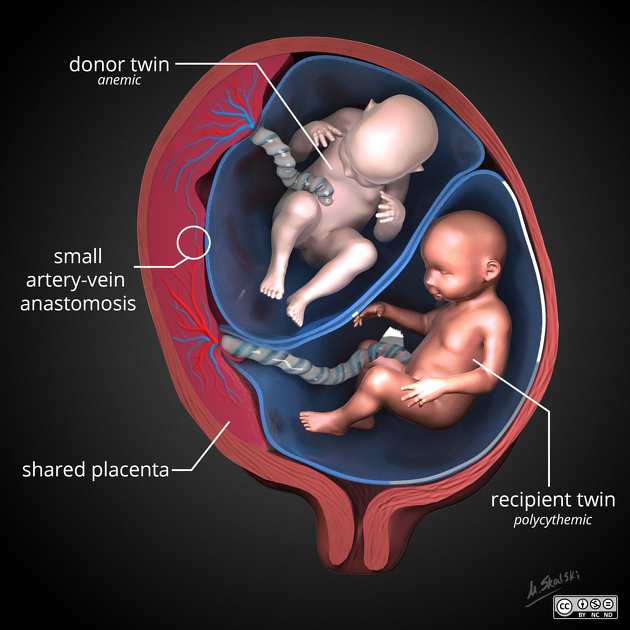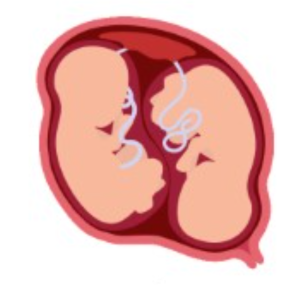It’s completely normal for even loving parents to worry about mixing up their twins. The key is to put simple, realistic systems in place to distinguish your babies day-to-day. Below we’ve compiled age-specific strategies, drawn from expert advice and twin parenting communities. Remember that as your twins grow, it will get easier to tell them apart.
Newborns (0–3 Months)
Newborn identical twins are often virtually indistinguishable, with few, if any, physical differences. In this stage, you’ll rely mostly on external, temporary newborn-safe techniques:
- Color-Coding their clothing and gear: Assign each baby a “signature” color from day one, for example, Baby A always in soft blue and Baby B in yellow. Dress them in color-coded onesies, hats, or swaddles, and use matching color pacifier clips, bottle bands, and other accessories.
Pros: Instant visual cue for everyone (even at 3 AM) and helps later when looking back at photos.
Cons: Requires consistency to avoid accidental outfit swaps.
- Hospital ID Bands or Baby Bracelets: Those hospital wristbands your twins wore at birth can be a lifesaver in the first days, and many parents leave them on for as long as they are comfortable. There are also soft, infant-safe identity bracelets (e.g., custom name bands or color-coded anklets) that can be used once hospital bands fall off.
Pros: Stays on around the clock.
Cons: Newborns grow quickly – bands can get tight and need constant resizing.
Safety: Use only baby-safe bracelets that won’t fray or break, with no small parts that pose a choking hazard. Place on the ankle over footed pajamas rather than the wrist if possible, so that the baby can’t easily chew it, and you can see it without undressing them.
- Mark the Diaper: Keep a non-toxic marker at the changing table and mark each new diaper with “A” or “B” (or the babies’ initials) when you put it on.
Pros: This is a short-term identifier that gets updated every diaper change, which is great to prevent confusion if you lose track during the night. It’s also invisible when clothed.
Cons: It only helps when the diaper is accessible (during changes) and you need to remember to keep using the correct letter each time!
- Nail Polish on One Toenail: Many twin parents swear by painting a tiny dab of non-toxic baby nail polish on one twin’s toenail (often the big toe). Choose a child-safe polish (such as Piggy Paint or another odorless, chemical-free brand) and a color you’ll remember.
Pros: Lasts several days to a week and doesn’t interfere with clothes or safe sleep. Because it’s on a toe, the baby won’t ingest it or notice it.
Cons: It must be checked and reapplied regularly as the polish can wear off.
Safety: Only use nontoxic polish meant for infants, and stick to toes (to avoid any chance of the baby chewing on a painted fingernail).
- Assigned Positions (Left/Right):For instance, always put Twin A on the left bassinet or left car seat, Twin B on the right. At home, you might always pick up or feed them in a left-to-right order as well (Baby A first, then Baby B).
Pros: This routine reduces mix-ups during hectic tasks, as twins are always in a specific spot, so you associate that spot with their identity.
Cons: Requires diligence to maintain the pattern (particularly if others move the babies). And it’s only a supplemental method, you’ll still want a physical identifier on the babies in case they get moved or passed around.
- Label Items and Use Name Tags: Don’t be shy about labeling things in the twins’ Put their names on crib nameplates, on bottle or pacifier labels, and on their swaddle or onesie.
Pros: Helps others (grandparents, babysitters) and reduces the chance of accidentally swapping belongings.
Cons: Must be placed where it can be seen without fully undressing the baby (shoulder or chest area), and remember to move name labels if you swap outfits between twins.
- Note Tiny Physical Differences: Examine your newborns for any natural distinguishing features. Often there are subtle differences: e.g., one might have a birthmark or “stork bite” (reddish patch) in a certain spot, slightly different ear shapes, or even different belly button scars.
Pros: These differences are permanent or long-term, and you can always double-check the birthmark or unique feature if you’re unsure.
Cons: Many newborn differences are extremely subtle (or one twin’s birthmark might fade over months). More of a backup method early on, but it becomes useful as differences become more pronounced.
General safety: Avoid any method that could pose a risk. For instance, do not use pins or sharp objects on clothing (no pinned name tags, use stickers or iron-ons instead). If using ribbons or bands, make sure they aren’t too tight or able to slip off easily (a too-loose ribbon could entangle a baby’s neck or hand). Always monitor any banding to prevent it from becoming too tight as the baby grows. Avoid any harsh chemicals, like writing on the baby’s skin with a marker.
General tips: Consider keeping a daily twins log or checklist during the newborn phase to track each baby’s feedings, diaper changes, or medications on paper or an app. This forces you to pause and ensure you know who is who at critical moments. For example, a simple chart with two columns (one for each twin) can prevent accidentally giving the same baby two feeds.
Infants (4–12 Months)
By about 4 to 12 months, your twins are more active and starting to show a bit of personality. You might have learned to tell them apart by subtle cues, but it’s still easy to get confused, especially if they’re dressed alike or if multiple caregivers are involved. You can continue updating the older methods used (like colour coding new bibs or getting permanent and smooth-edged bracelets with their names on them) or try some new strategies!
- Different Hairstyles or Grooming: If your babies have hair, you can subtly style each twin differently. For example, if you have twin girls, you might put a single ponytail in Twin A’s hair, while Twin B gets two pigtails (when supervised).
Cons: Not all infants have enough hair to style. And any hair accessory must be baby-safe (no tiny clips that can be swallowed; use soft cloth headbands sparingly and never during sleep or unsupervised time to avoid choking/strangulation hazards).
- Leverage Emerging Physical Differences: By 6-12 months, you may notice one twin has a tooth before the other, or their facial expressions set them apart. Document any small differences (eye shape, a freckle appearing, etc.), as these become your secret clues.
Pros: These features are naturally occurring markers and will only become more pronounced with time. No extra work needed once you spot them.
Cons: To outsiders, these differences may still be too subtle.
General tips: Remember to stay adaptable and flexible, as babies grow fast and their needs may change. If a method isn’t working (e.g., one twin keeps pulling off their colored sock), try another approach, such as a soft ankle bracelet or a dab of polish again. It can also help to do a “twin ID check” each morning, for example, as you dress them. Make a mental note or even a quick note in a journal, “Blue star outfit = Oliver today,” so you start the day confident of who is who. Encourage extended family or daycare providers to use name labels and not rely solely on guessing. And don’t worry, by the end of this first year, you will likely be the expert on telling your babies apart!
Toddlers (1–3 Years)
Toddlers develop individual personalities, preferences, and often physical distinctions (like different mannerisms, or one becomes taller than the other), and even their voices and the way they talk or move will start to differ. That said, identical twin toddlers can still fool new acquaintances, and they might even enjoy swapping identities for fun! Here are strategies to balance more long-term methods while fostering each child’s budding individuality:
- Embrace Personalities and Preferences: One of the most reliable ways to distinguish toddler twins is by who they are, not just how they look. By age 2 or 3, you’ll notice a clear personality. Pay attention to these traits; you’ll often know at a glance who is who by behavior (e.g., the one climbing the furniture vs. the one quietly looking at a book).
Pros: Reinforces seeing your twins as individuals, and others (like preschool teachers) will pick up on these cues over time.
Cons: Personalities aren’t visible in a quick encounter, so new people will still need visual hints. During meltdowns or sleepy times, personality cues might blur (both toddlers screaming look pretty similar!).
- Individualized Clothing Choices: Now is a great time to let your twins have input in what they wear, which naturally leads to different clothing. Even if you still buy two of the same shirt, they might each gravitate to different colors or graphics. Encourage this autonomy: one toddler might love wearing a dinosaur shirt while the other prefers stripes.
Pros: When each child consistently picks different outfits, it’s an organic way to tell them apart (and they learn their own style).
Cons: Twins may sometimes insist on dressing identically, which is fine occasionally. In those cases, you might fall back on other cues like hair or accessories that day.
- Different Haircuts or Styles: Toddlerhood is when you can really make use of hairstyle differences. If you have twin girls, you might cut one child’s hair shorter or give them distinct cuts (one with bangs, one without, for example. For twin boys, you can try different haircuts (one with a slightly different style or part).
Pros: A haircut is a long-term solution – it stays in place every day and doesn’t rely on what outfit they have on. It’s especially useful in group settings like daycare.
Cons: You’ll need to maintain the distinct styles with regular trims. Also, some twins may later want to have the same hairstyle. Treat these differences as helpful but not something that must be enforced if a child expresses otherwise.
- Personalized Accessories: By age 2-3, some children love accessories like hats, backpacks, or bracelets. Use this to your advantage: perhaps one twin always wears a particular patterned hat or a watch, while the other has a favorite hairband or a distinct pair of shoes.
Pros: Differentiates their belongings and helps them learn ownership.
Cons: Toddlers also love to trade and play tricks, so don’t be surprised if one toddler hands you the other’s named cup just to confuse you. Supervise any accessory that could pose a hazard (e.g., necklaces should be avoided at this age due to strangulation risk).
General safety: As twins become more independent, ensure that any method you continue using is age-appropriate. For example, if you were still relying on painted toenails, know that toddlers might notice and try to peel or chew them, so you may drop that method. Avoid using any method that might impede their movement or play (no ankle bands that could catch on playground equipment, etc.).
General tips: At this age, it’s often enough to keep distinct hair/clothing and let their own differences shine. Also, be prepared for the day your identical twins realize they can trick people by swapping outfits or pretending to be each other! Encourage honesty, but also appreciate the humor, it means they understand how alike they appear to others.
Final Tips
Distinguishing between identical twins at home requires a mix of creativity, consistency, and adaptation. Early on, you rely on intentional identifiers like color-coded clothes, labels, or safe marks. As they grow, those external aids can gradually give way to innate differences and the twins’ own preferences. There’s no one “right” way; some families even keep a system of specific color wristbands until they feel confident, while others find they just “know” by a certain age and don’t need markers. Do what works for your family, and don’t worry about what others might think.
Remember, even the most organized parents will occasionally call a twin by the wrong name or second-guess themselves; it’s a common slip that happens in the chaos of parenting multiples. If a mix-up does happen, take a breath and be kind to yourself. By using the practical strategies above and adjusting as your twins develop, you’ll minimize mix-ups and gain confidence each day.
Helpful informal resources:



























